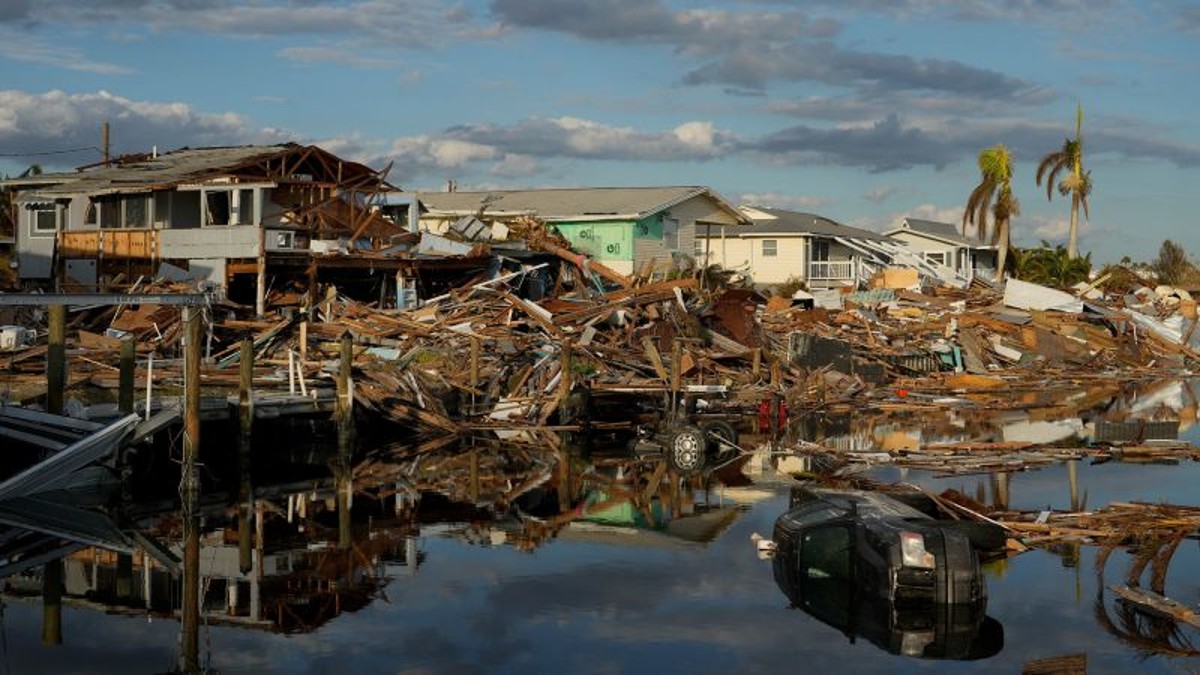They find bacteria that can be seen without a microscope 0:50
(CNN) --
Infections from a rare "flesh-eating" bacteria, also known as flesh-eating bacteria or vibriosis, in Florida have increased in the days following Hurricane Ian due to catastrophic flooding from the storm.
There have been 65 cases of
Vibrio vulnificus
infection and 11 deaths in the state this year as of Friday, according to the Florida Department of Health, up from 34 cases and 10 deaths reported statewide in 2021.
Many of the infections are in Lee County.
Ian made landfall as a Category 4 storm on September 28 in Lee County, which includes Fort Myers and Sanibel Island in southwest Florida.
The Florida Department of Health in Lee County warned residents about the risks of
Vibrio vulnificus
on October 3.
"As the post-storm situation evolves, DOH-Lee urges the public to take precautions against infection and illness caused by
Vibrio vulnificus
," spokeswoman Tammy Soliz told CNN in an email on Tuesday.
advertising
“DOH-Lee is seeing an abnormal increase in cases of
Vibrio vulnificus
infections as a result of exposure to flooding and standing water after Hurricane Ian.
As of September 29, 2022, 26 cases of
Vibrio vulnificus
associated with Hurricane Ian have been reported to DOH-Lee.
All 26 cases had infectious wounds due to exposure to Hurricane Ian floodwaters that occurred from storm surge entering their homes or during post-storm cleanup.
There have been six deaths among Lee County residents."
Before the storm, there were two cases of
Vibrio vulnificus
in Lee County and 37 cases in the state, according to data from the Florida Department of Health.
"What we're seeing with our trends is that cases are actually going down [since the storm], which is a very good thing," Florida Department of Health spokesman Jae Williams said Tuesday.
Vibrio vulnificus
is a naturally occurring bacteria that lives in warm salt water and infects humans through the consumption of undercooked shellfish and broken skin.
Infections are "very prevalent with flooding," Williams said.
Ian “brought an astronomical record amount of flooding.
Not all hurricanes bring that kind of flooding.”
The Florida Department of Health posted flood safety information before, during and after the storm through social media posts and radio announcements, Williams said.
The fact sheet warns people with open wounds and cuts to avoid skin contact with flood waters.
Symptoms of vibrio infection, or vibriosis, include watery diarrhea, abdominal cramps, nausea, vomiting, fever, and chills.
Treatment is not always needed and severe illness is rare, but doctors prescribe antibiotics in the most persistent cases, according to the US Centers for Disease Control and Prevention (CDC).
In extreme cases, the bacteria can cause blood infections, blistering skin lesions, amputations, or death.
"Vibriosis causes approximately 80,000 illnesses and 100 deaths in the United States each year," the CDC says on its website.
People at highest risk of severe illness and death from
Vibrio vulnificus
are those with a weakened immune system or those with liver disease, according to the CDC.
Flesh-eating bacteriaFlorida









